This document covers a syllabus for data structures and algorithms, focusing on List ADT operations such as creation, insertion, search, deletion, and displaying elements. It details various implementations of List ADTs using arrays, linked lists, and provides examples of operations, as well as applications like sparse matrices. Additionally, it discusses the representation of sparse matrices and cursor-based implementations of linked lists.
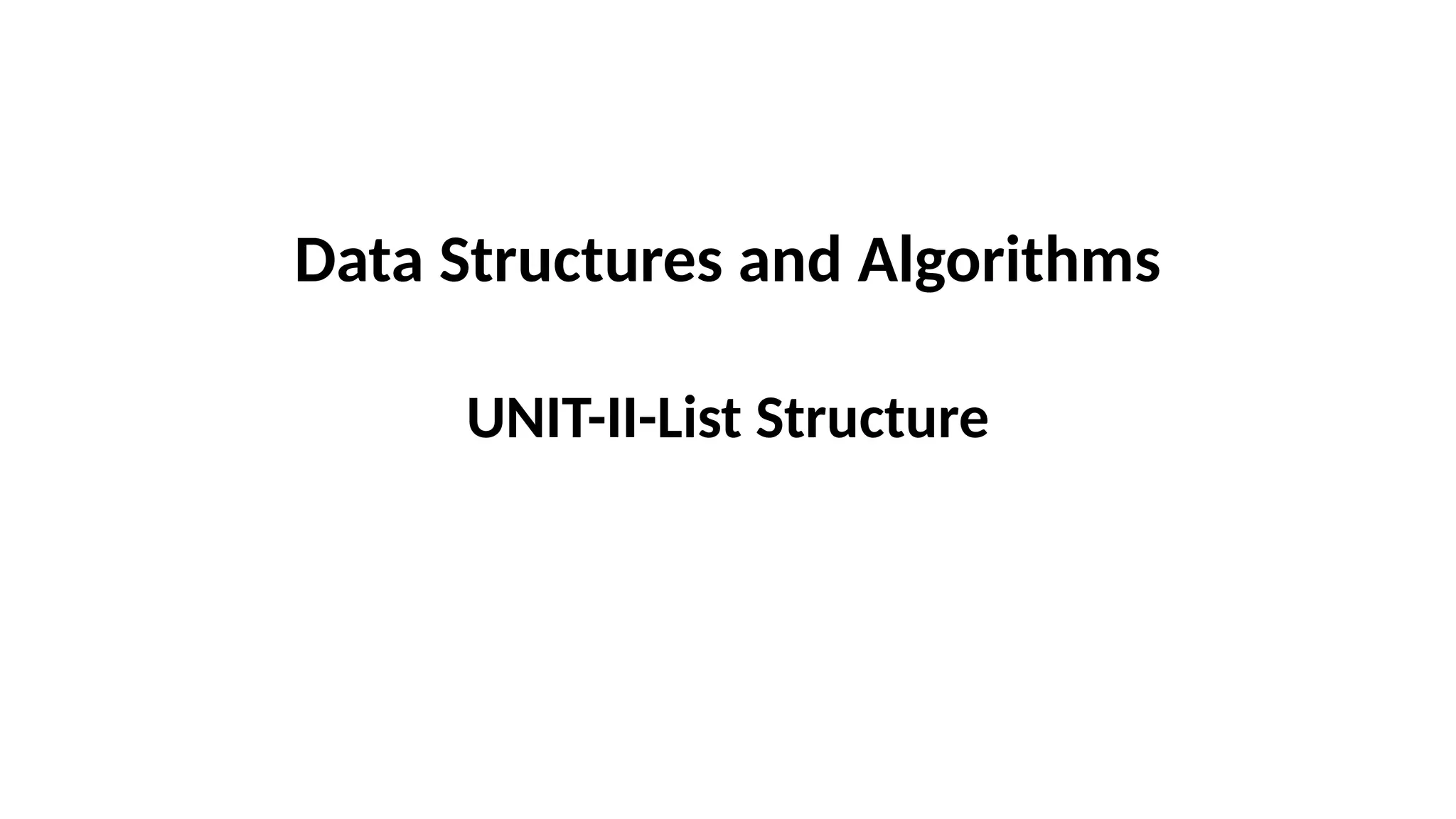
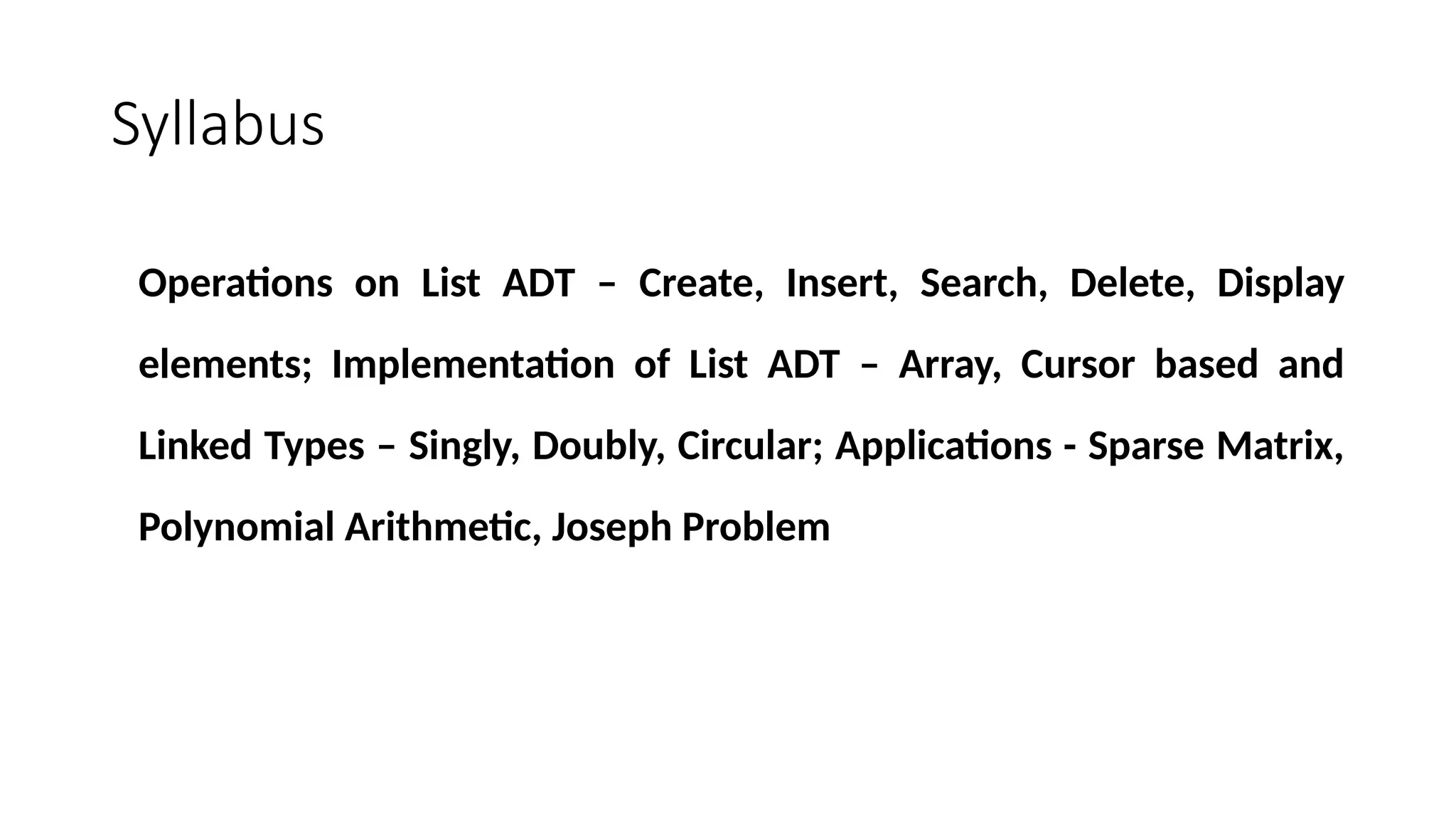
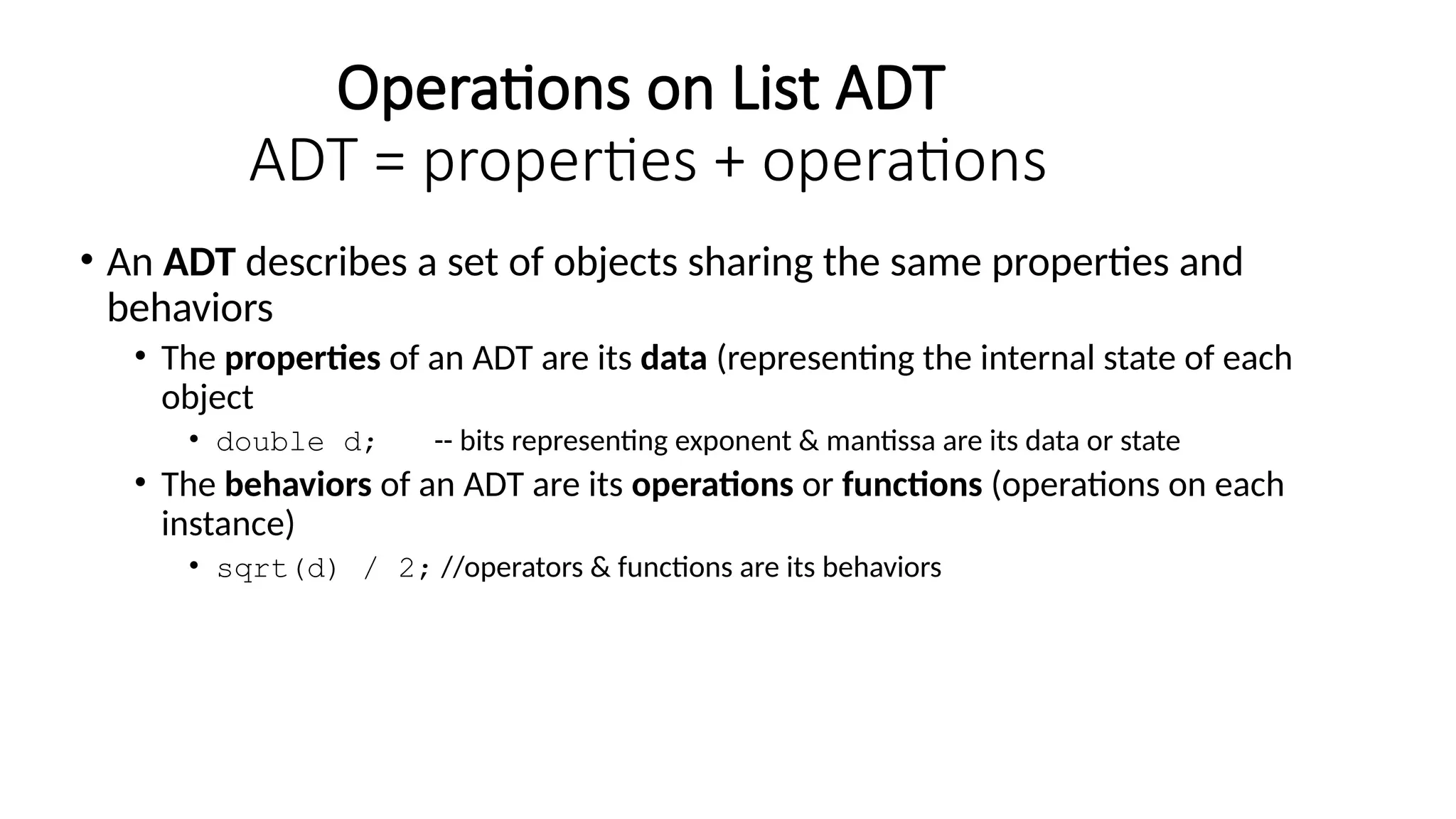
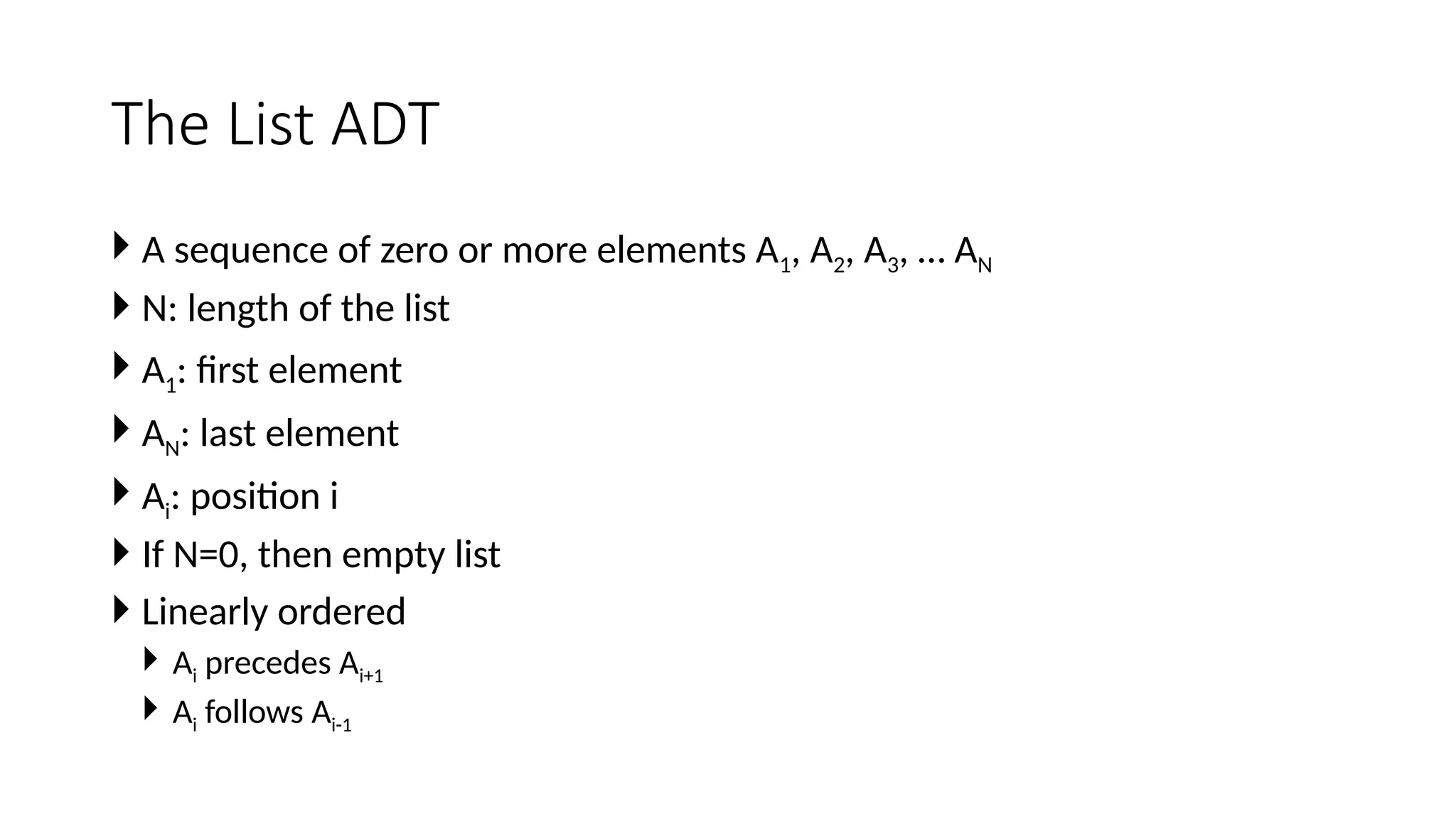
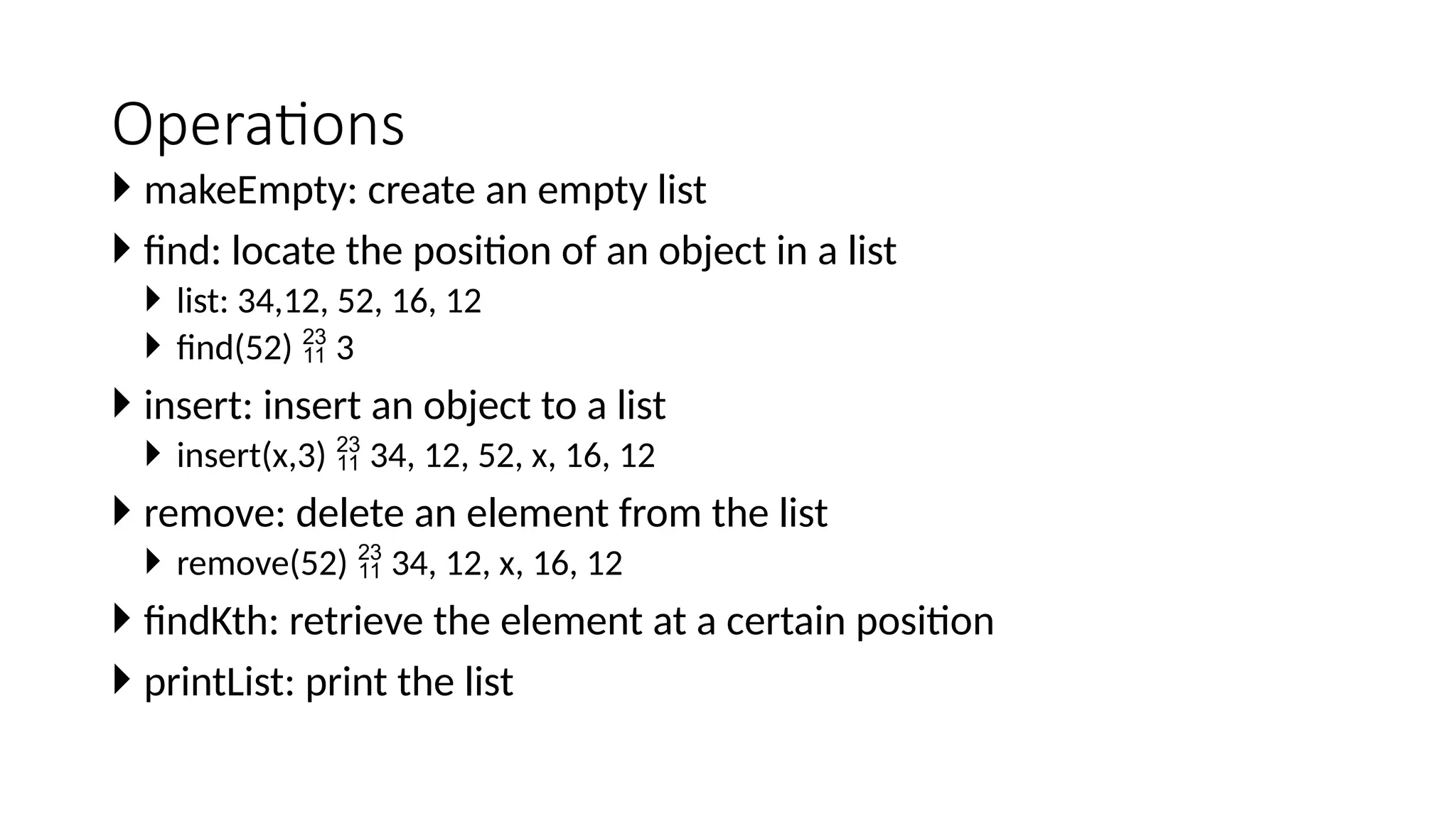
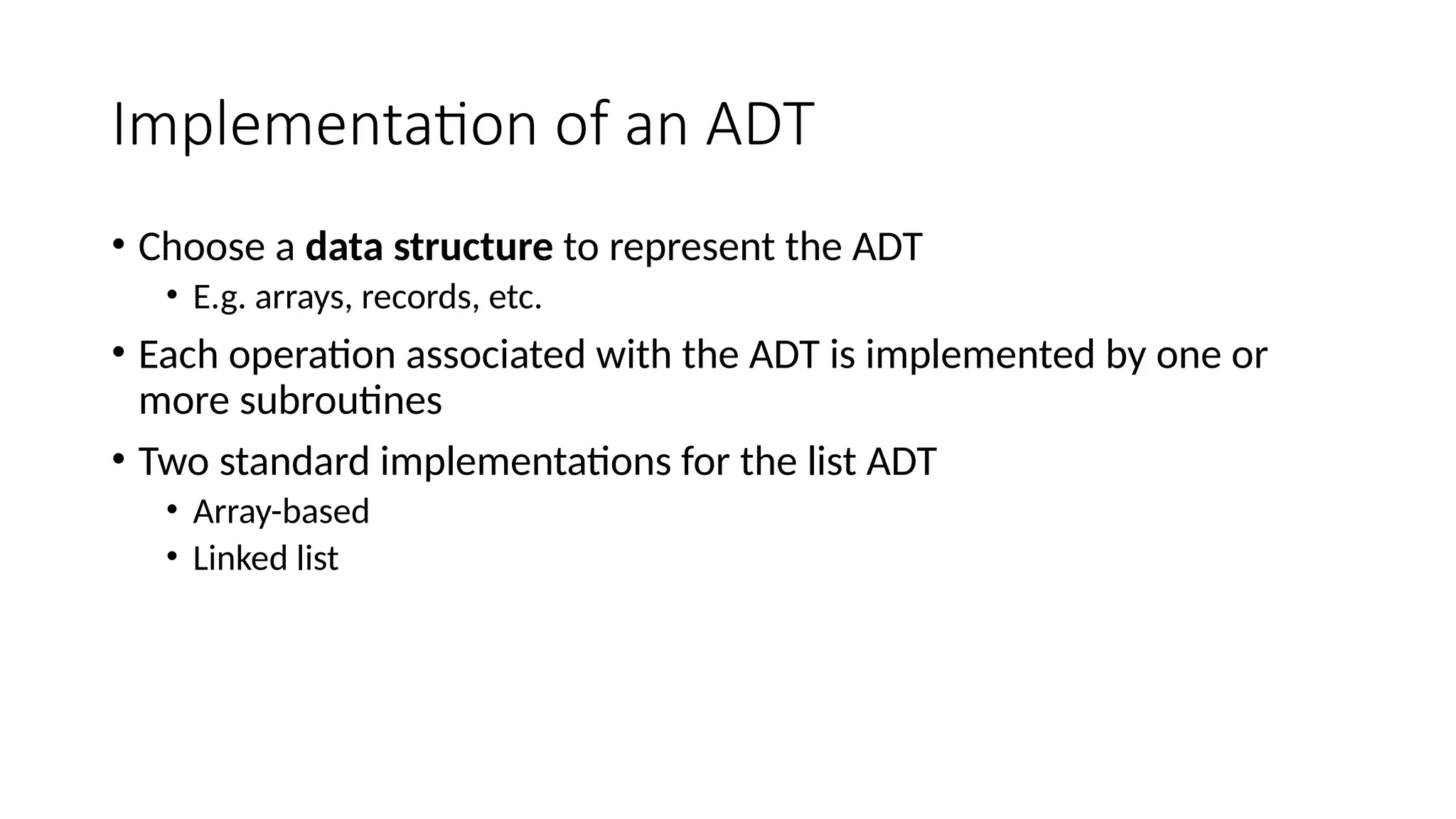
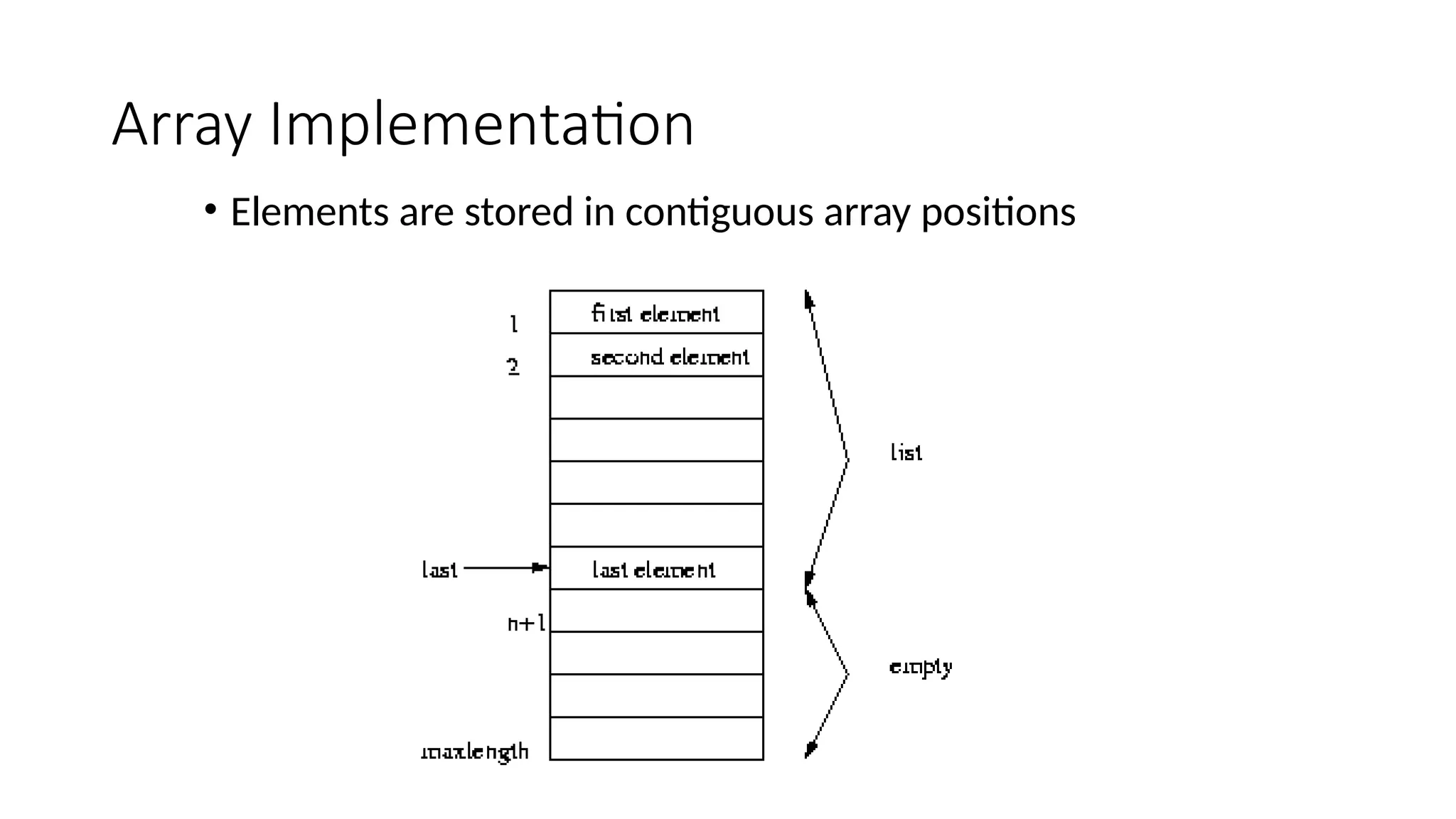
![1D Array Representation
• 1-dimensional array x = [a, b, c, d]
• map into contiguous memory locations](https://image.slidesharecdn.com/datastructure1-241224050809-0129cb5b/75/Data-structure-and-algorithm-list-structures-8-2048.jpg)
![2D Arrays
• The elements of a 2-dimensional array a declared as:
int a[3][4] ;
• may be shown as a table
a[0][0] a[0][1] a[0][2] a[0][3]
a[1][0] a[1][1] a[1][2] a[1][3]
a[2][0] a[2][1] a[2][2] a[2][3]](https://image.slidesharecdn.com/datastructure1-241224050809-0129cb5b/75/Data-structure-and-algorithm-list-structures-9-2048.jpg)
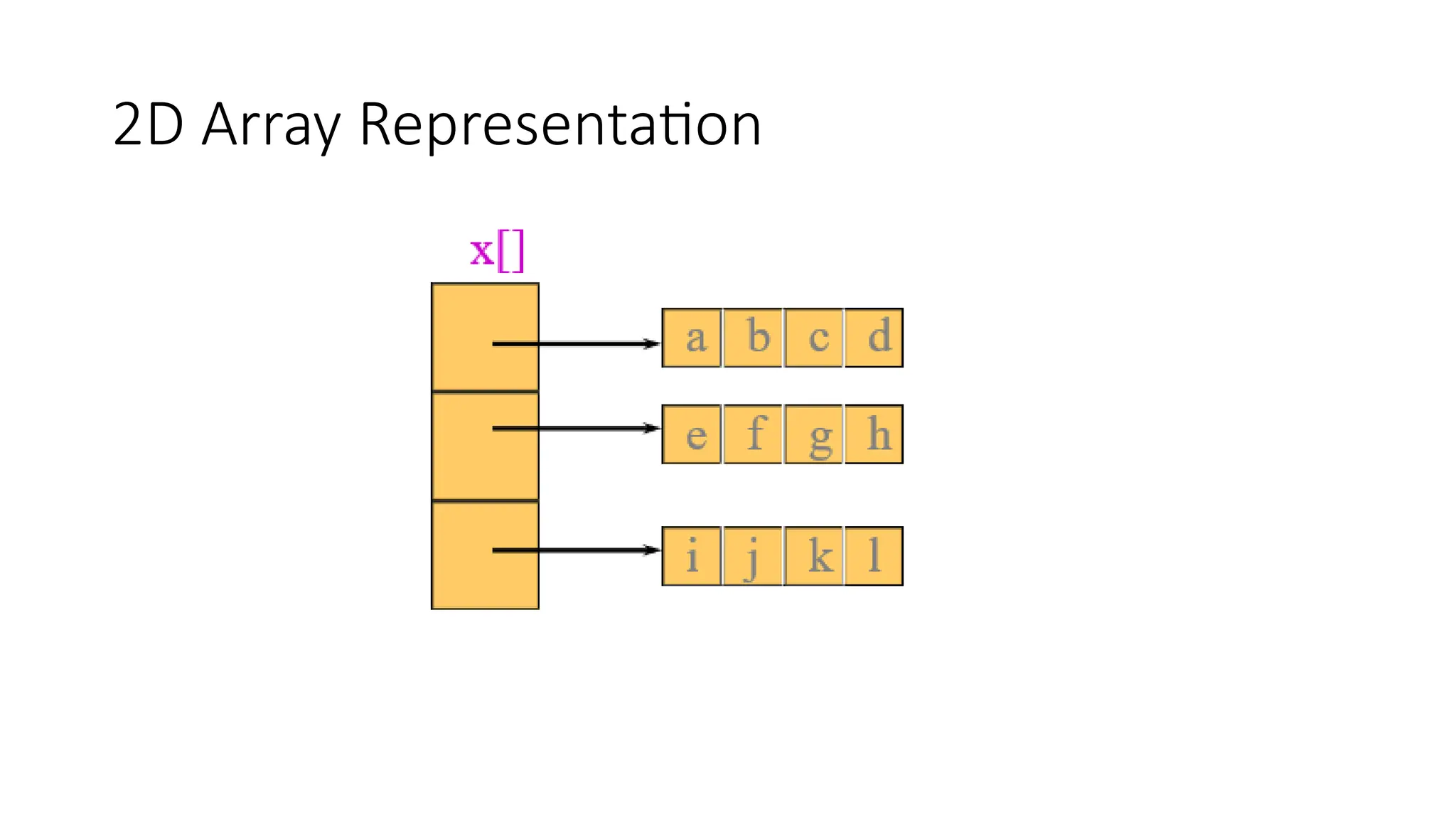
![Linear List Array Representation
• use a one-dimensional array called alphabet[]
• List = (a, b, c, d, e)
• Store element I of list in alphabet[i]](https://image.slidesharecdn.com/datastructure1-241224050809-0129cb5b/75/Data-structure-and-algorithm-list-structures-11-2048.jpg)
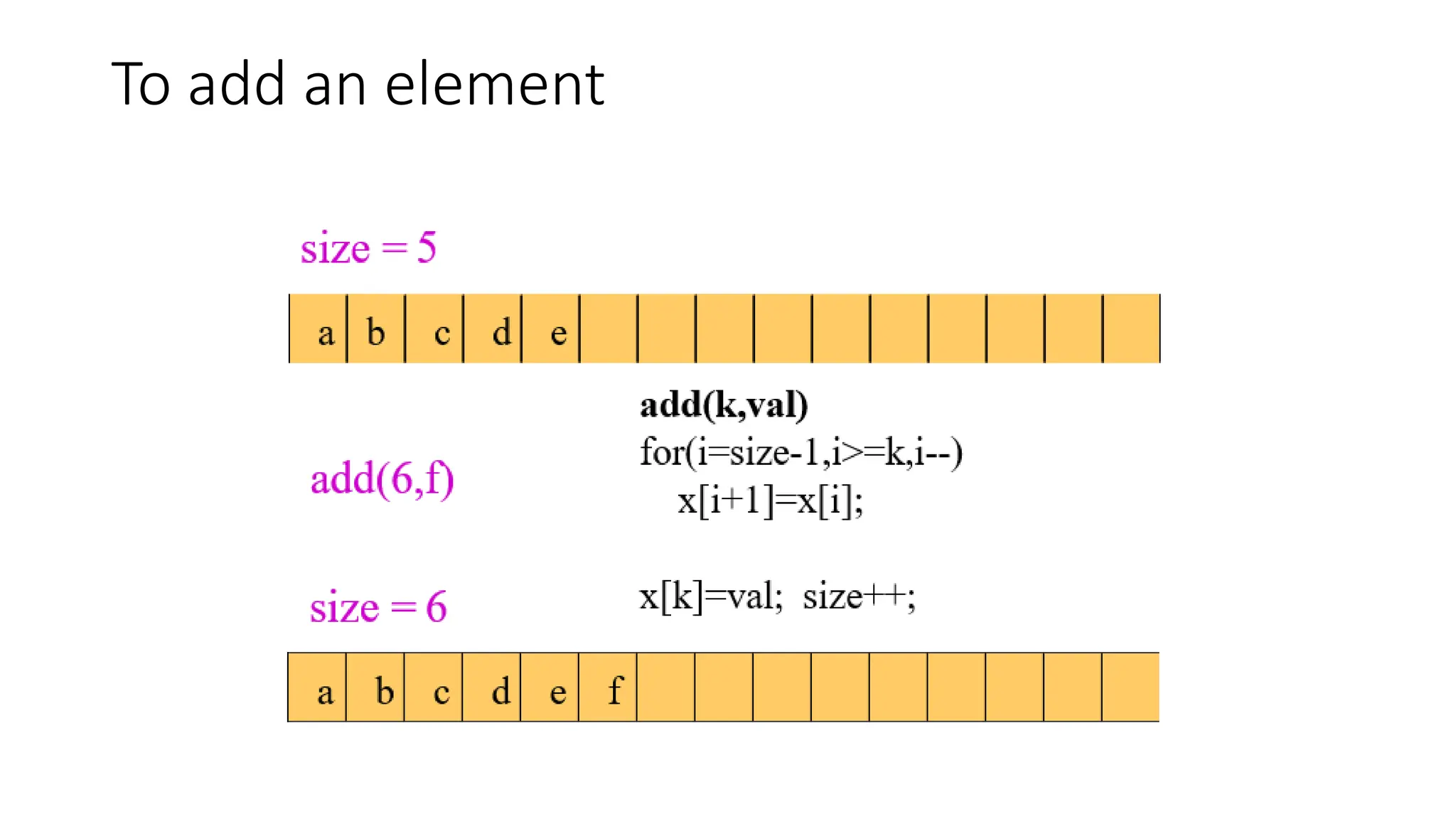
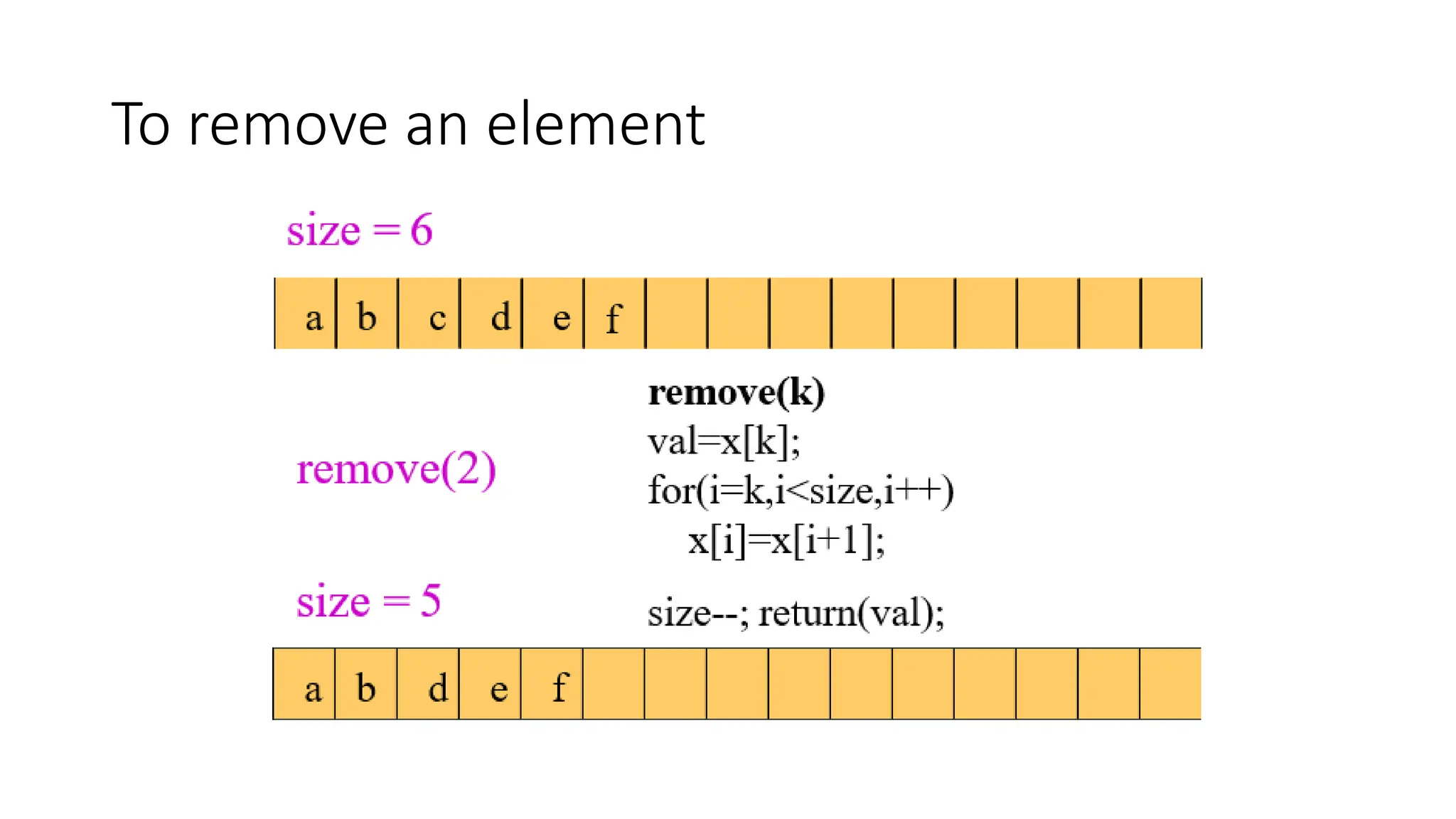
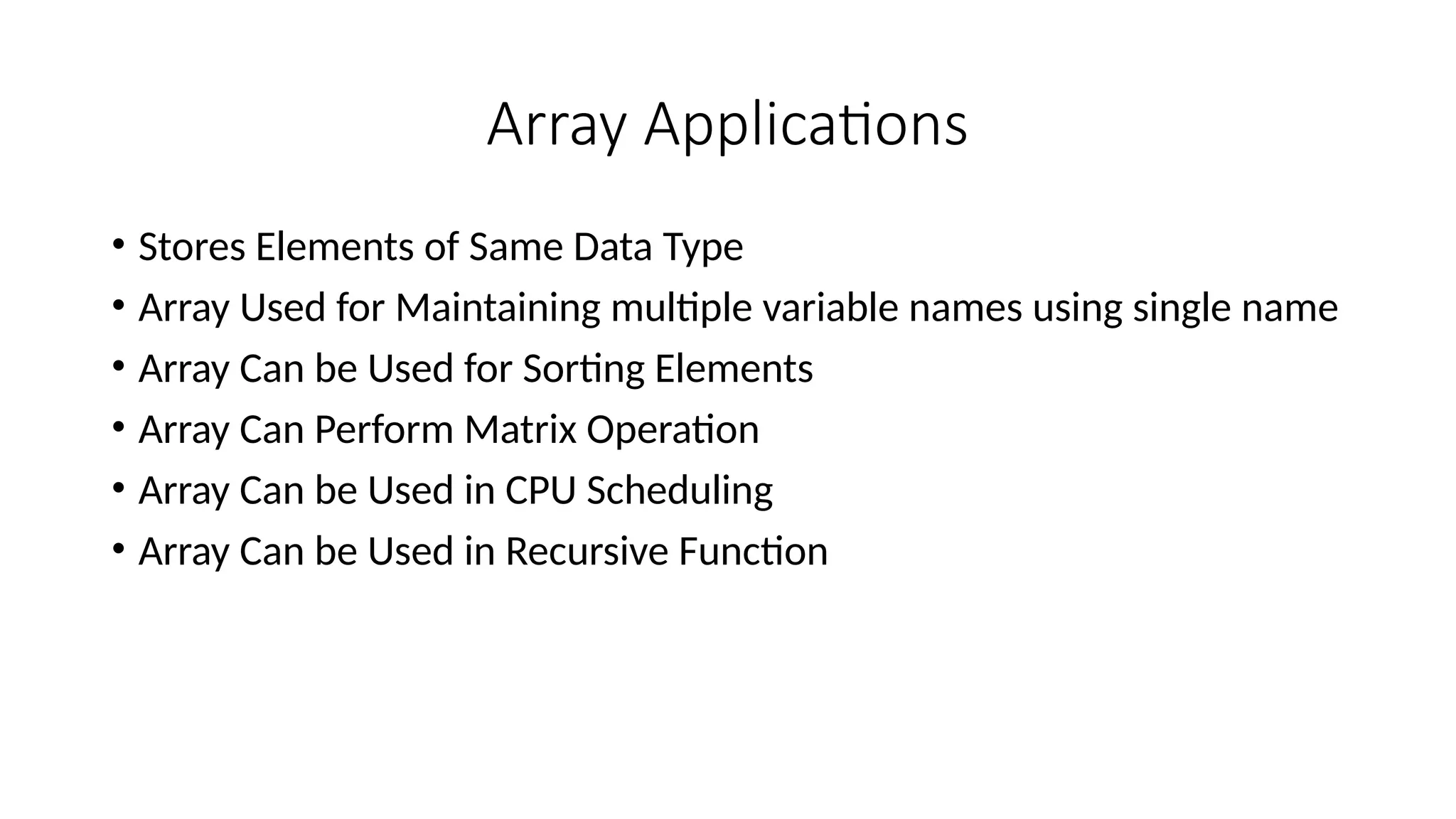
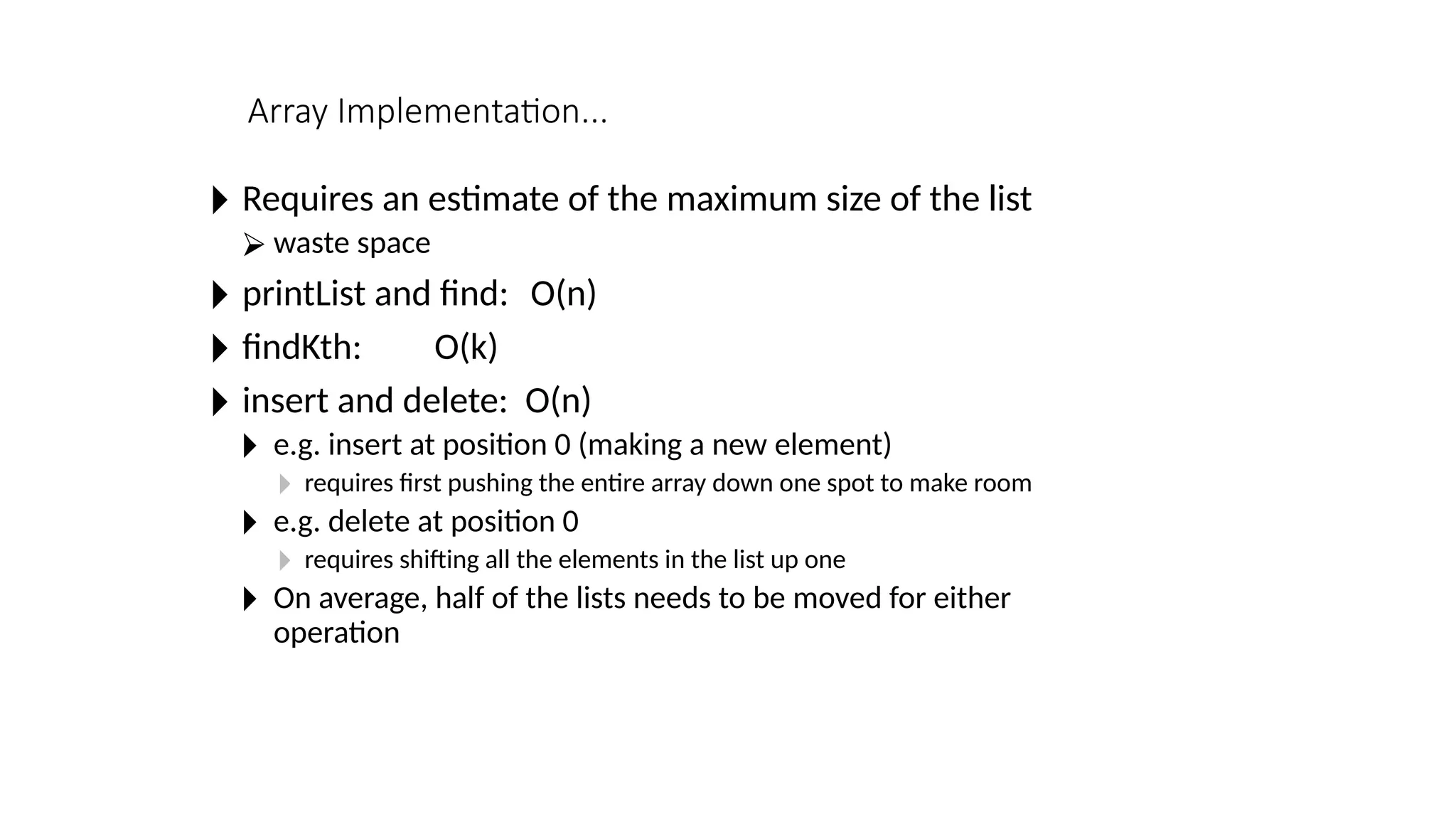
![• Array Declaration
• Int arr[10];
• b=10;
• int arr1[b];
• int [b+5];
• 2-D Array
• int arr2[4][5];](https://image.slidesharecdn.com/datastructure1-241224050809-0129cb5b/75/Data-structure-and-algorithm-list-structures-16-2048.jpg)
![Dynamic array declaration
• int size_arr;
• scanf("&d",&size_arr);
• int *arr1 = (int*)malloc(sizeof(int)*size_arr);
• int p11[size];
• for(i = 0; i < size; i++ )
• { scanf("%d",&p11[i])
• }
• Or
• for(i = 0; i < size; i++ )
• { scanf("%d",(p11+i));
• }](https://image.slidesharecdn.com/datastructure1-241224050809-0129cb5b/75/Data-structure-and-algorithm-list-structures-17-2048.jpg)
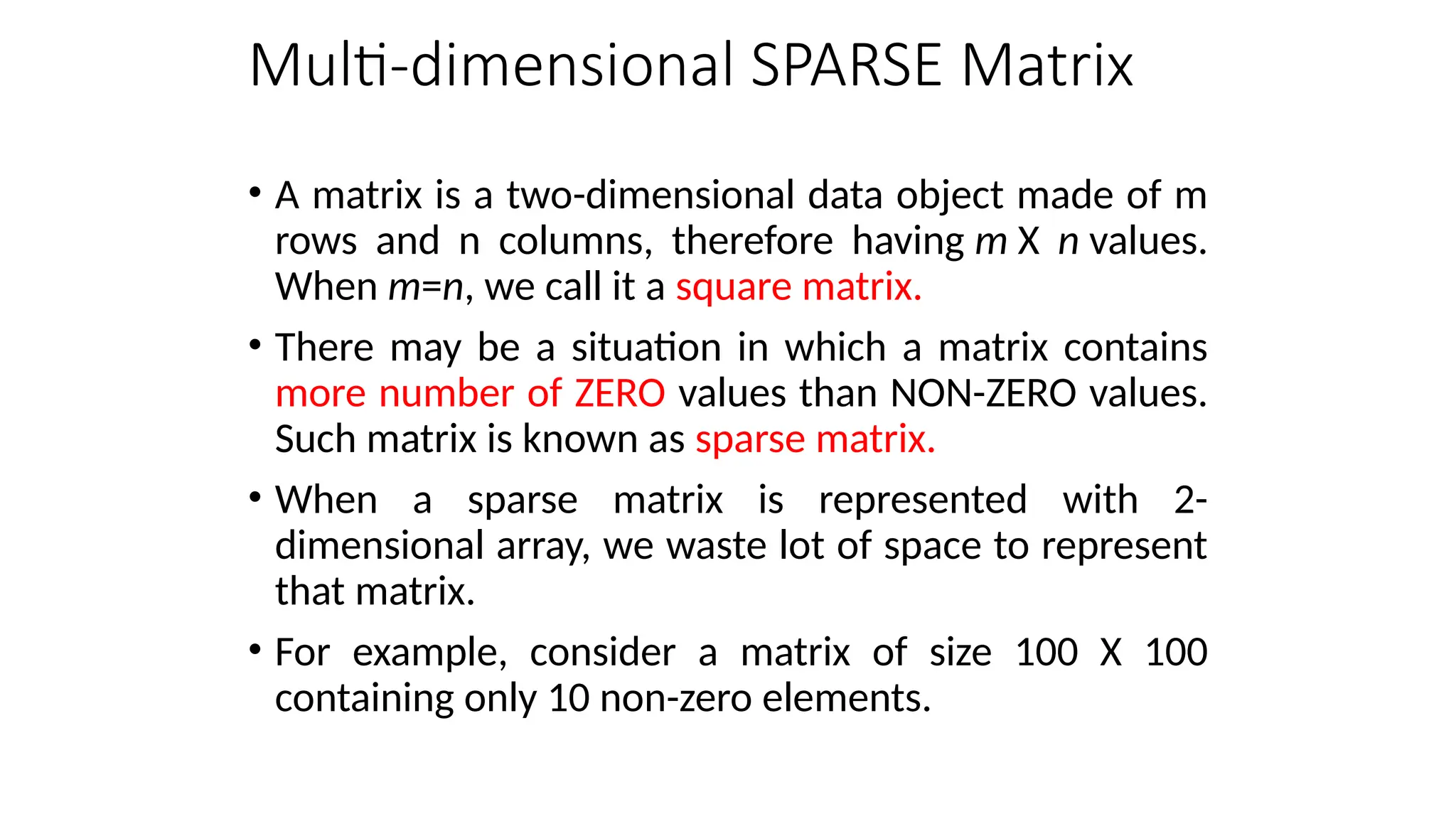
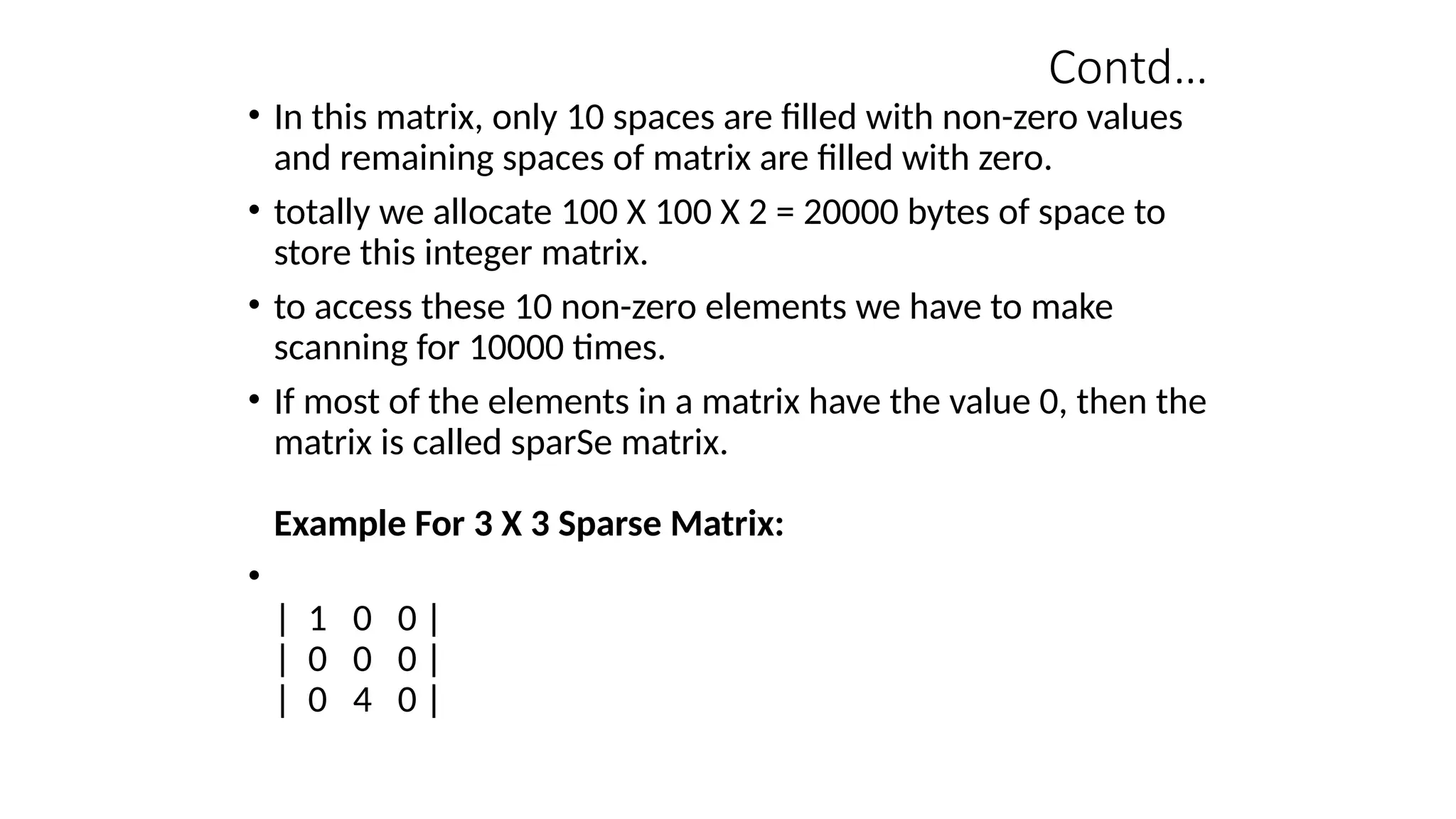
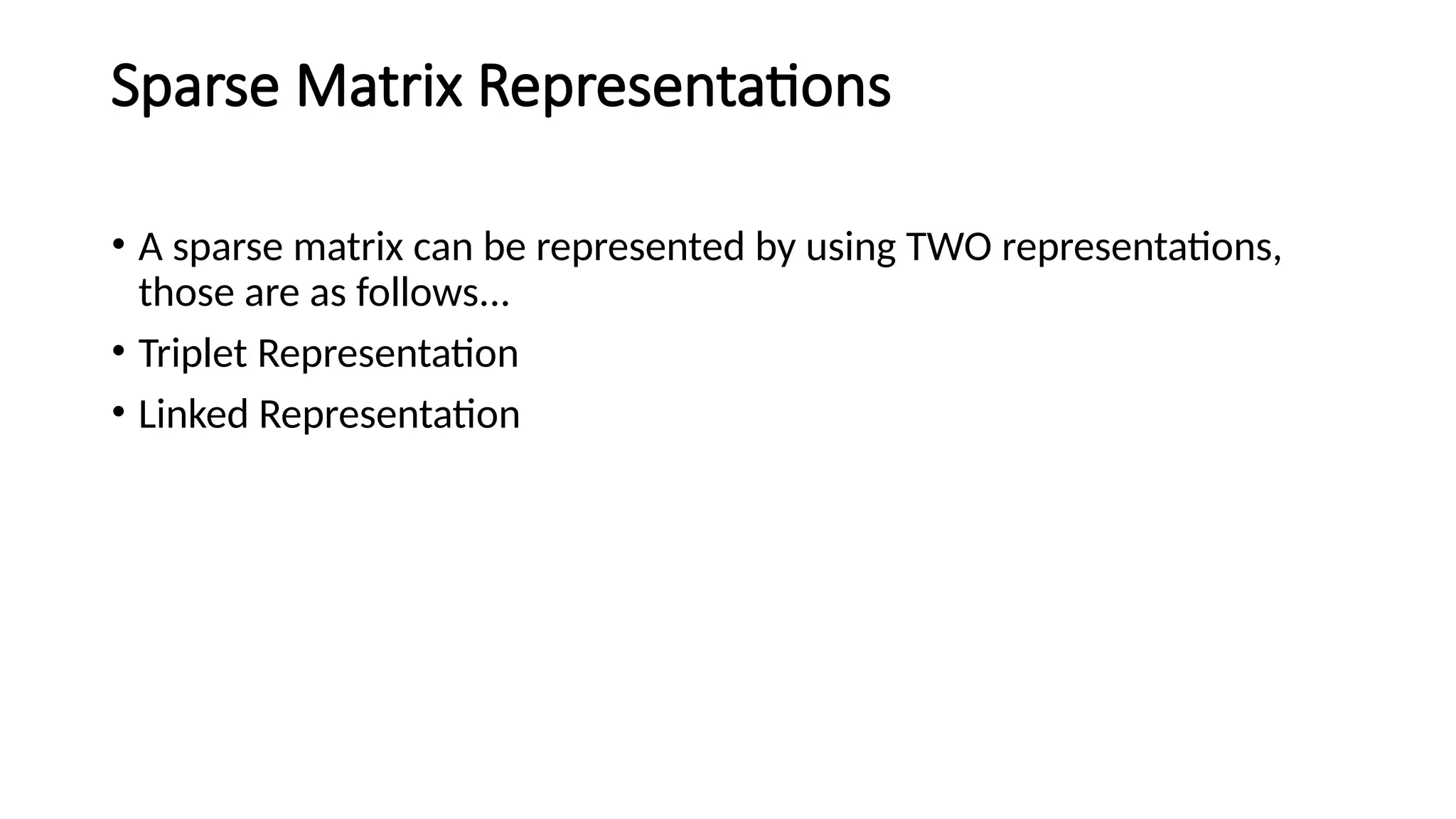
![TRIPLET REPRESENTATION (ARRAY REPRESENTATION)
• In this representation, only non-zero values are considered along with
their row and column index values.
• The array index [0,0] stores the total number of rows, [0,1] index
stores the total number of columns and [0,1] index has the total
number of non-zero values in the sparse matrix.
• For example, consider a matrix of size 5 X 6 containing 6 number of
non-zero values.](https://image.slidesharecdn.com/datastructure1-241224050809-0129cb5b/75/Data-structure-and-algorithm-list-structures-21-2048.jpg)
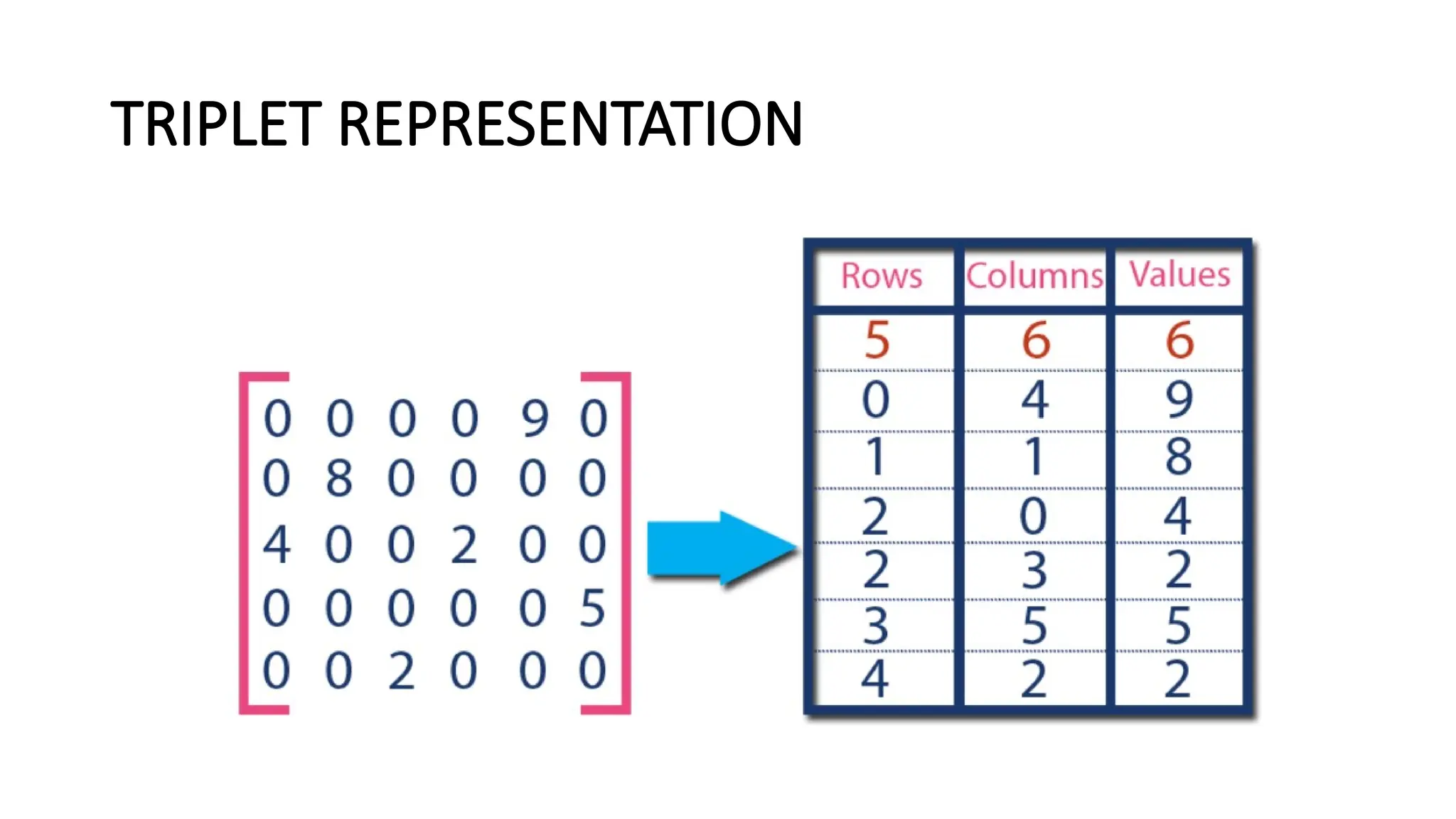
![Array Implementation
for(i=0;i<m;i++)
{
for(j=0;j<n;j++)
{
printf("%d ",Arr[i][j]);
}
printf("n");
}
for(i=0;i<m;i++)
{
for(j=0;j<n;j++)
{
if(Arr[i][j]!=0)
{
B1[s1][0]=Arr[i][j];
B1[s1][1]=i;
B1[s1][2]=j;
s1++;} }
}](https://image.slidesharecdn.com/datastructure1-241224050809-0129cb5b/75/Data-structure-and-algorithm-list-structures-23-2048.jpg)
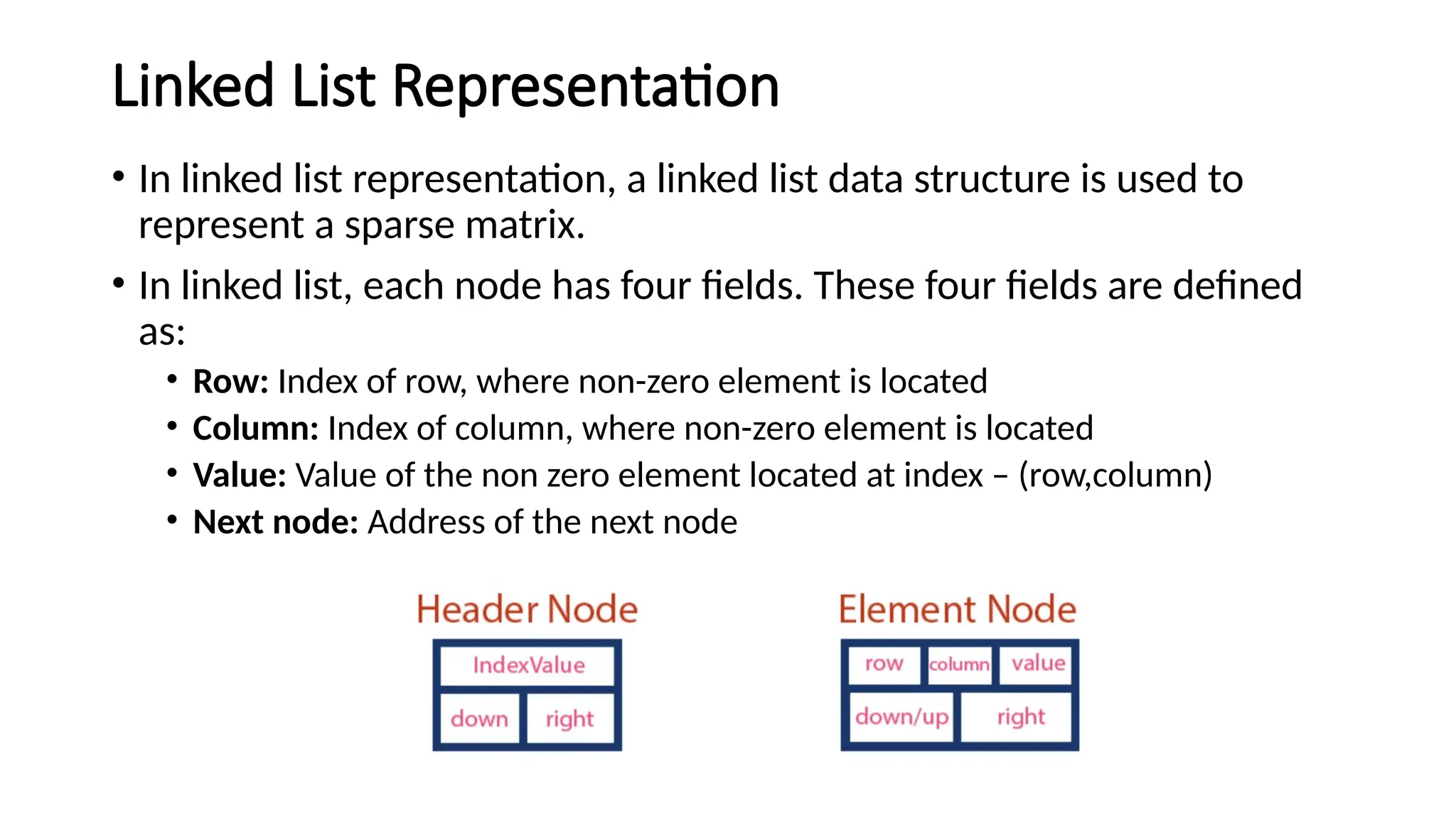
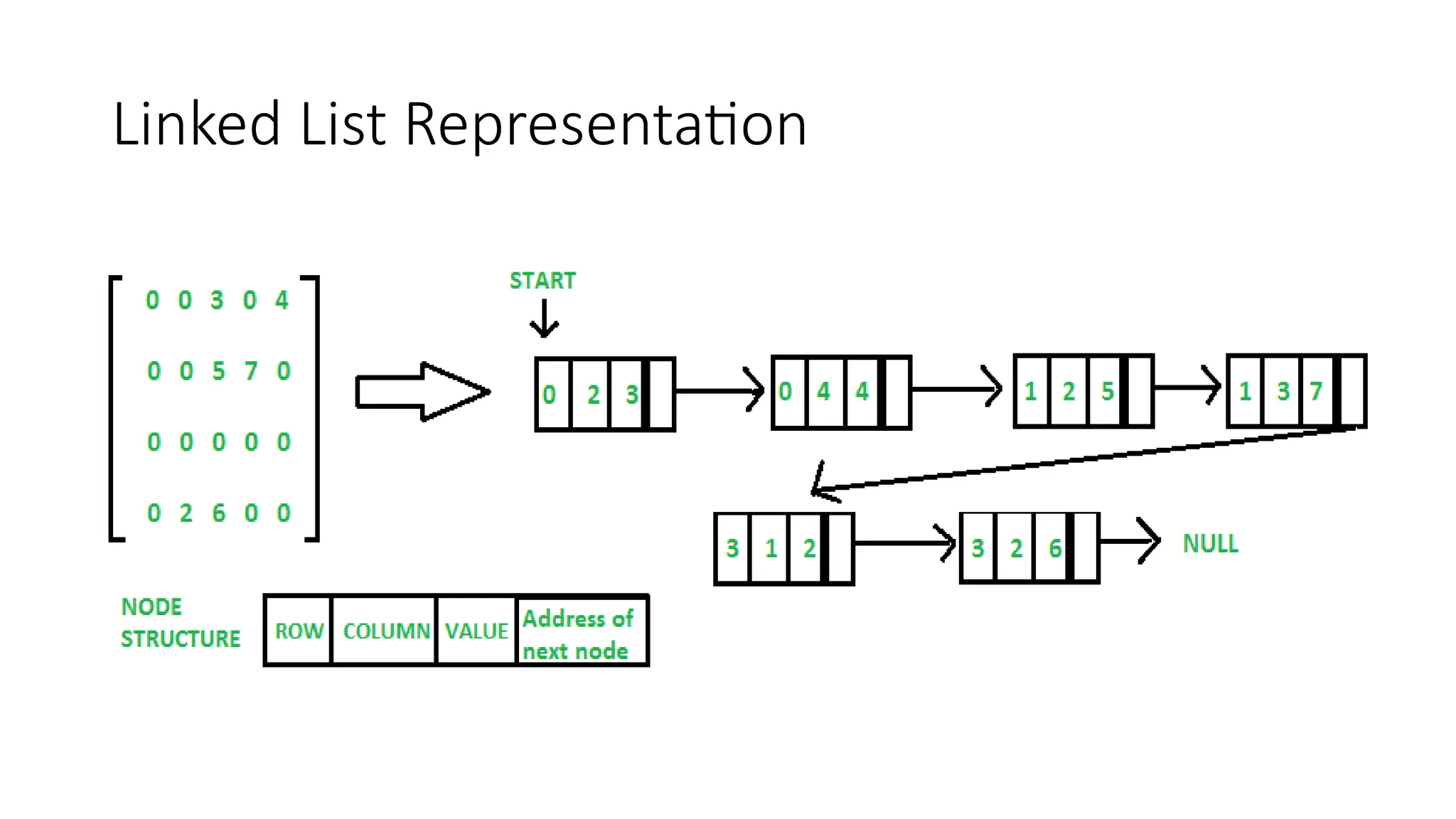
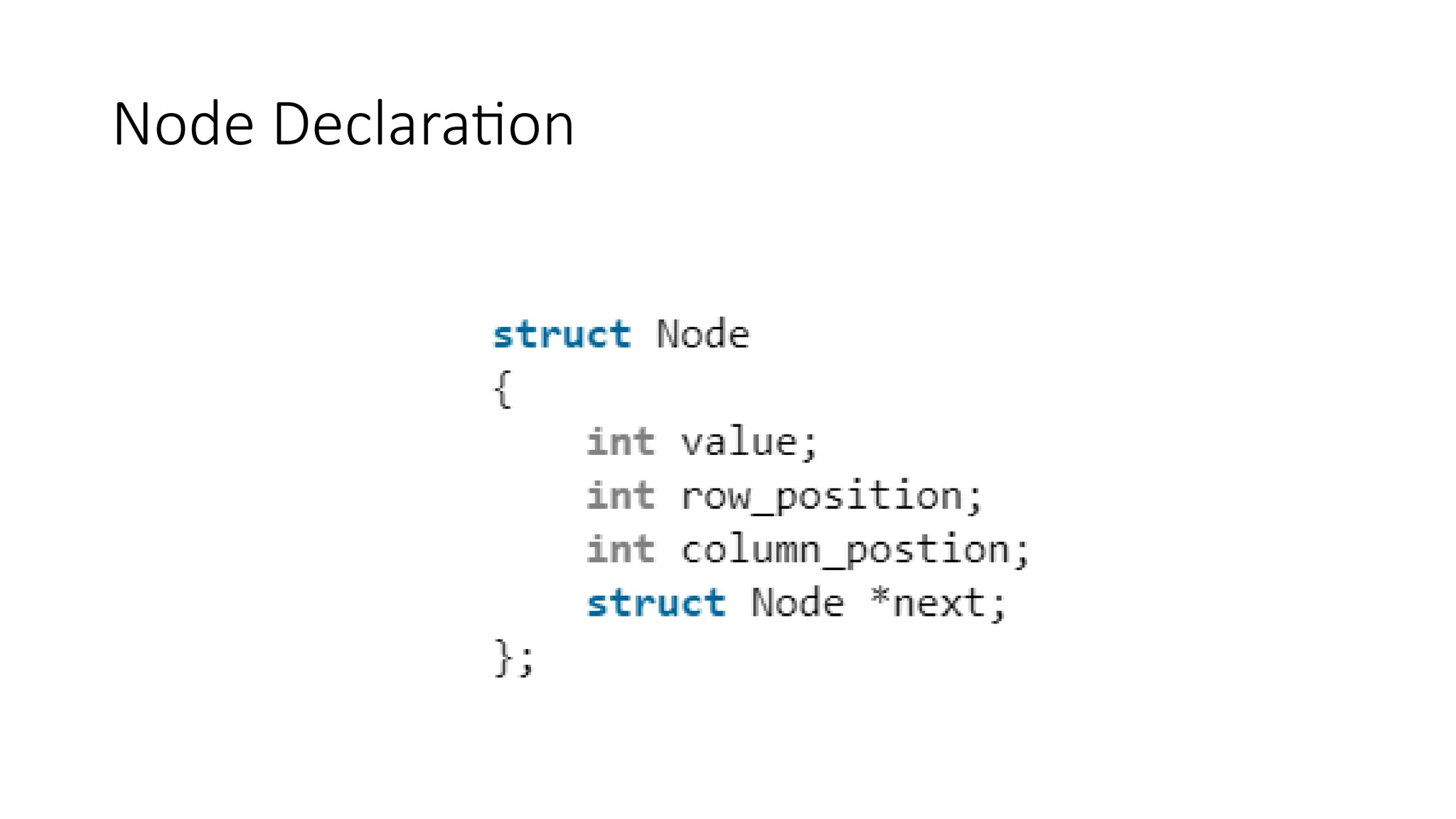
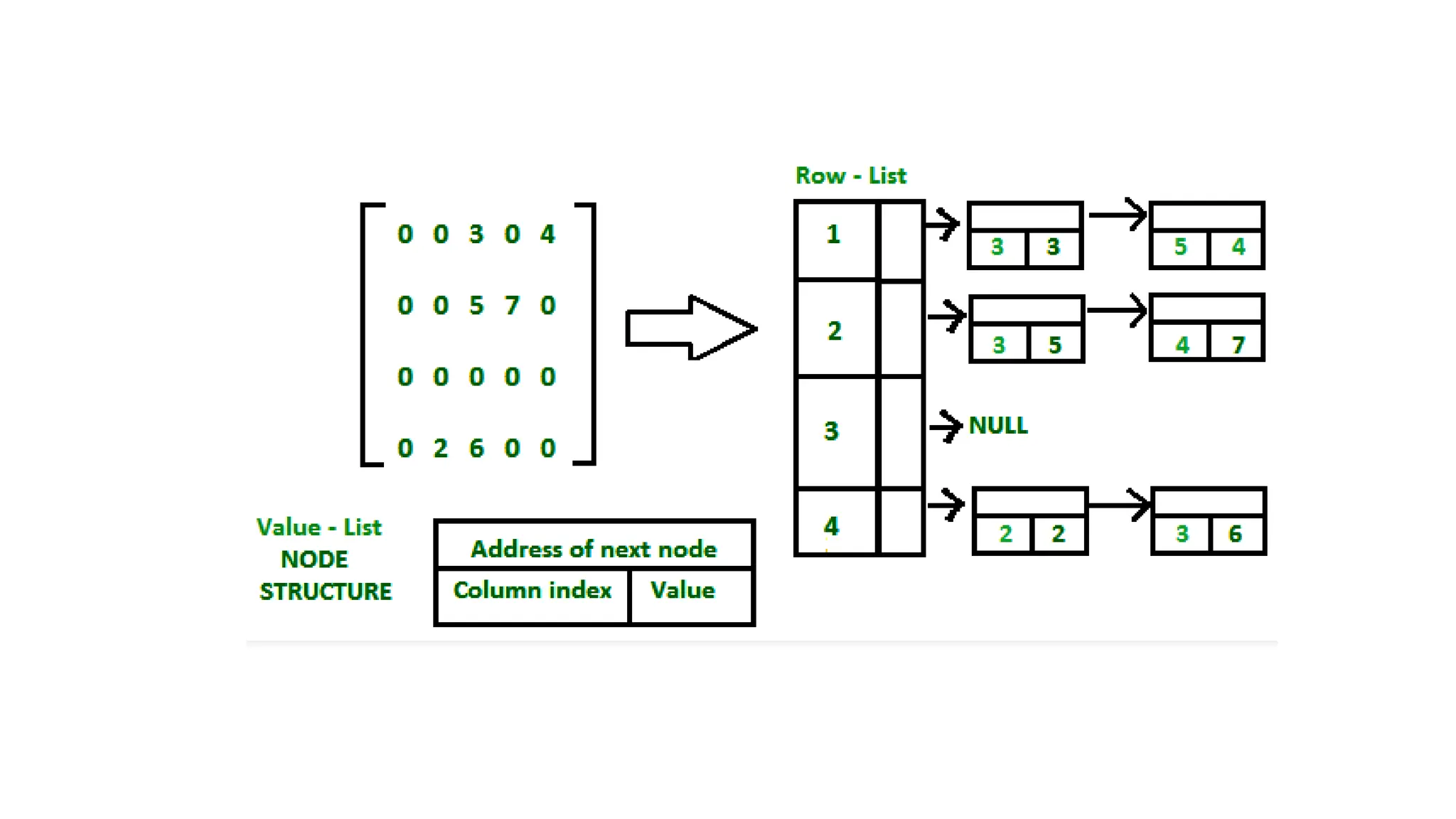
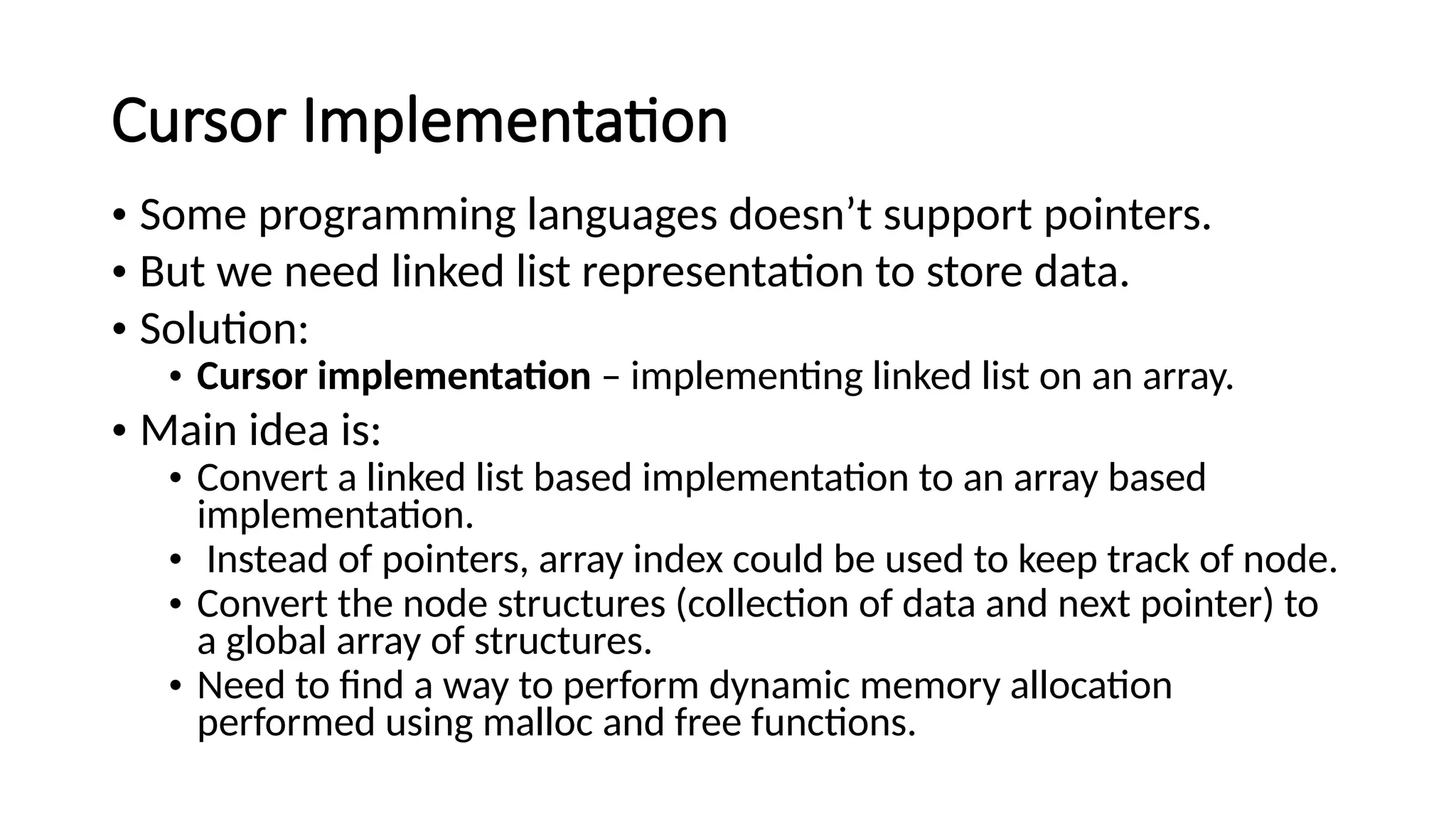
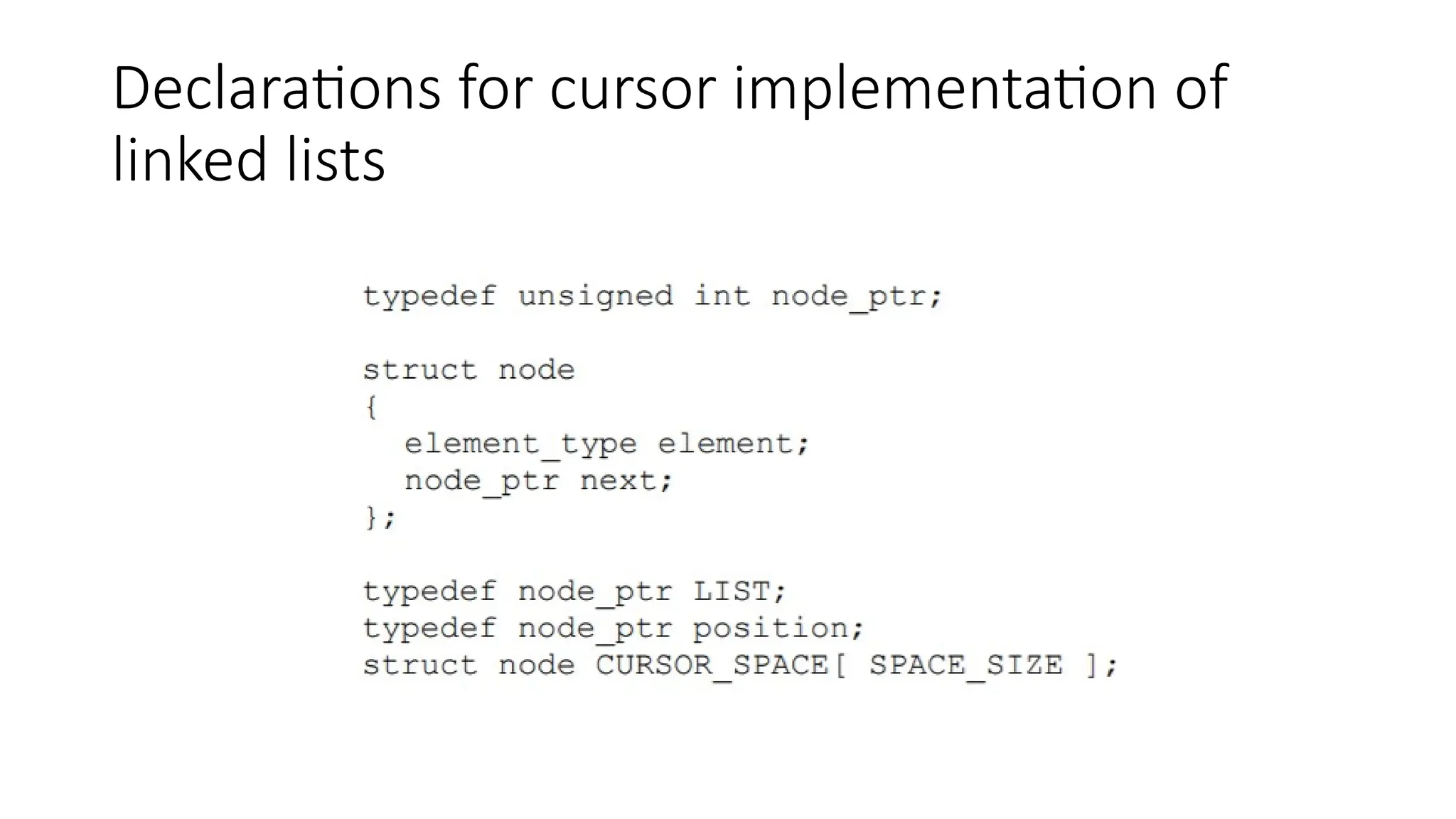
![Initializing Cursor Space
• Cursor_space[list] =0;
• To check whether cursor_space is empty:
• To check whether p is last in a linked list](https://image.slidesharecdn.com/datastructure1-241224050809-0129cb5b/75/Data-structure-and-algorithm-list-structures-30-2048.jpg)